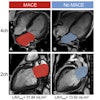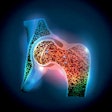Tuesday, November 27 | 5:30 p.m.-6:00 p.m. | LL-PHS-TU9D | Lakeside Learning Center
In this scientific poster, a study team will explore the capabilities of the open-source Generalized Radiation Observation Kit (GROK) application for providing automated patient size estimates on CT exams.Although CT scan dose screens can provide information about x-ray exposures, patient size is a necessary variable to properly calculate radiation dose. The American Association of Physicists in Medicine (AAPM) Task Group Report 204 provides a method for size estimation, but it doesn't take into account irregular patient contours or variations in tissue x-ray attenuation, according to presenter Dr. Ichiro Ikuta of Harvard Medical School.
The research team implemented GROK to examine CT scans of the thorax and the abdomen/pelvis. By using pixel data such as pixel area and x-ray attenuation values from the CT image, the patient's size can be modeled as a cylinder of water with a water-equivalent diameter (Dw), Ikuta said.
"This surrogate of patient size takes into account both the cross-sectional area of the patient, even with highly irregular contours, as well as the highly variable attenuation of distinct tissues," Ikuta said.
The researchers used a feature of the GROK toolkit to analyze the image border to determine the amount of air surrounding the patient. If a patient's body crosses the image border, the proportion of image border pixels with air attenuation will be reduced, Ikuta said.
"Our research demonstrates how this proportion of image border pixels with air attenuation has a relationship with the amount of the patient outside of the [field-of-view (FOV)]," Ikuta said. "This relationship can be used to estimate the actual patient size despite parts of the patient falling outside of the FOV."
Both the water-equivalent diameter and the detection of body parts outside of the field-of-view are automated by GROK, which may allow for large-scale analysis of patient radiation dose from CT in a more appropriate manner, Ikuta said.
"Such calculations could be performed retrospectively as well as prospectively," he said.
Ikuta will also present his research during a scientific session on Wednesday, November 28 (SSK16-05, 11:10 a.m.-11:20 a.m., Room S403B).




















